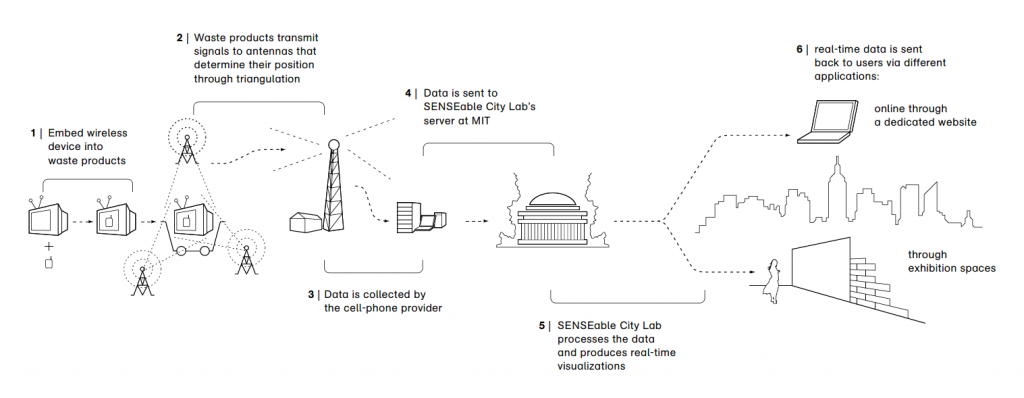A while back now, I caught an episode of Inside Man on CNN. This is a show in which Morgan Spurlock goes behind the scenes to explore some topic from the inside out. (If the name sounds familiar, Spurlock’s the guy who, a decade ago, produced the documentary Supersize Me, which told the story of a month that he spent eating fast food.) Anyway, the topic of the show that I watched was what happens to the trash that the average America generates each day.
Spurlock traced three different types of junk: garbage which, if you live in NYC like he does, ends up in a landfill in Pennsylvania; recyclables, which – fortunately – get repurposed (but which, unfortunately, don’t include those plastic bags you get at the grocery store or CVS); and electronics.
It was the electronics tracking that most interested me.
To track where his old computers and other gear were off to, Spurlock hauled it all up to MIT, where the researchers at Trash Track tagged it so that they could follow it along. (Most of our e-waste is recycled in the US, but some of it goes to developing nations, where the regulation is non-existent. One of the purposes behind tracking e-trash is to help protect the poor workers (and the poor environment) from the toxins that are present in it.)
The group that does the trash tracking is part of the senseable city lab at MIT, which gets involved in a lot of interesting projects, from mapping the routes visitors take at the Louvre (and how long they spend in front of the Mona Lisa) to measuring air pollution in China.
With Trash Track, they tag a piece of the equipment (e.g., the board) then track where it goes by measuring the location, and gathering the data via the cellular network. The tags use:
“…GPS and CDMA cell-tower trilateration based on the Qualcomm inGeo™ platform in combination with Sprint’s cell phone network, utilizing Qualcomm’s gpsOne® technology to provide both accuracy and availability for position tracking applications like ours. Future generations of devices will work seamlessly across CDMA/GSM/UMTS networks, a feature that will allow tracking items across international borders.” (Source: senseable lab at MIT Trash Track).
To make sure the tags stayed “alive” long enough, they developed the ability to hibernate the tag, turning it on every couple of hours to grab the position data.
“…The tag also uses a motion sensor, which allows it to continue being in hibernation mode if no movement has been detected, thus further extending the battery life. If movement has been detected, the motion sensor wakes up the device to check and report its new position. Our algorithms vary the sampling rate in response to conditions sensed by the tag. In particular, the tag uses a set of orientation sensors to sense changes in position to increase the location sampling rate when the tag is apparently moving, and whenever previously unseen cell tower IDs are observed.”
Trash tags, themselves, are environment-friendly: they’re RoHS compliant.
Here’s the flow of how it works.
In any case, Morgan Spurlock and Trash Track help remind us that we need to focus attention on just what happens to all that trash we toss out, once it’s out of sight.

